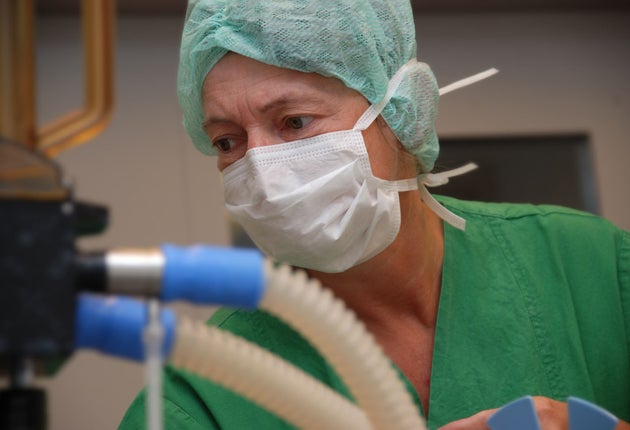Hospitals on alert as theatre equipment fails

A nationwide alert was issued to all NHS hospitals yesterday following a series of incidents in which anaesthetic machines have been wrongly used or have malfunctioned, causing harm to patients.
The Medicines and Healthcare Products Regulatory Agency (MHRA) said there had been five incidents in the past year in which patients had suffered injury. A spokesperson said they included "breathing-system blockages" which had "resulted in patient deaths".
In a statement later, however, the MHRA withdrew its claim that patients had died. It said approximately 250 anaesthetic incidents were reported each year "usually related to the way the equipment is used rather than a fault in the device itself" of which "less than five" were considered more serious. The statement added: "We are not aware of any device related deaths in the last five years."
In one incident highlighted in the alert, an anaesthetic breathing system was connected to the wrong outlet of the machine. When the patient showed signs of distress, medical staff wrongly diagnosed the problem as bronchospasm – a sudden constriction of the airways – and prescribed drugs to relieve it.
By the time they realised there was a problem with the equipment, the patient had suffered a pneumothorax, in which air enters the space between the lung and the chest wall, causing the lung to collapse. They inserted a chest drain and the patient survived. The MHRA said it was unable to provide further details of other cases "due to confidentiality".
There are approximately 6 million operations a year carried out by the NHS and an estimated 3.5 million are under general anaesthetic. Hospitals have been ordered to ensure that, before inducing anaesthesia, they have "an alternative means of ventilation immediately available" in case anything goes wrong.
The MHRA alert suggests a "self-inflating bag" – a device which, when attached to an oxygen supply, can be used to manually ventilate a patient. "When problems with patient ventilation occur, consider the immediate use of a self-inflating bag," it says. "This may identify the site of the problem, while maintaining ventilation and oxygenation."
The statement added: "It is important to note that this is a precautionary measure to remind anaesthetic staff of checks they should be putting in place before induction of anaesthesia and appropriate actions in the unlikely event of an equipment problem."
Andrew Hartle, chair of the safety committee of the Association of Anaesthetists, said: "The death rate from anaesthetics is less than one in 100,000. If you are giving 3.5 million anaesthetics a year, problems can be rare but still happen. We are aware of some instances involving life-threatening emergencies where if the advice had been followed earlier, they might have been averted. In most cases the anaesthetist felt the problem was with the patient when it was actually with the anaesthetic machine.
"This alert is not meant to scare people but it says [to anaesthetists]: 'Don't let this happen to you.' It shouldn't be even a once-in-a-career event," he added.
Peter Nightingale, the president of the The Royal College of Anaesthetists said: "To some degree these events [problems with ventilating a patient] happen to every anaesthetist. When it happened to me, I did what I was trained to do: disconnect everything and blow down the tubes.
"If you see the chest rise, you know what is happening," he added.
Subscribe to Independent Premium to bookmark this article
Want to bookmark your favourite articles and stories to read or reference later? Start your Independent Premium subscription today.

Join our commenting forum
Join thought-provoking conversations, follow other Independent readers and see their replies